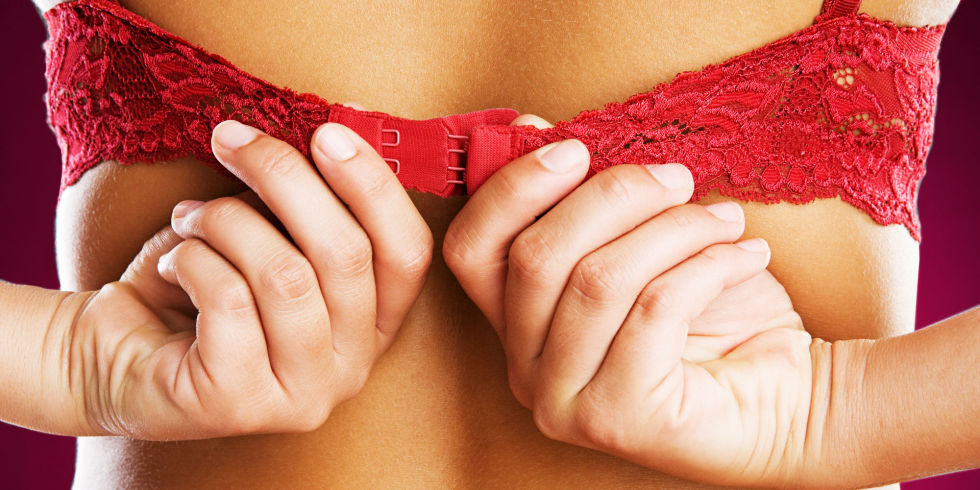The best part of a long day at work might be going home and finally doing the one thing you’ve been wanting to do all day—take off that pinching, poking, uncomfortable bra.
But lingerie expert Tomima Edmark, president of online underwear retailer HerRoom.com, says that if you’re uncomfortable at the end of the day, it’s likely not your bra that’s to blame, it’s the fit. “A bra that fits right doesn’t feel like you’re wearing a bra,” she notes.
The crazy part? We’re almost all guilty of the same mistake, says Edmark: Wearing a too-small cup with a too-big band. “Since most women don’t like the sound of large cup sizes (DDD, G), they prefer to stay in the smaller cups because the size sounds ‘normal’ to them.”
Here’s the problem. Wearing the wrong size has uncomfortable side effects (hello underwires poking your underarms!)—and it allows for quicker wear and tear on the bra itself.
Edmar’s best advice is not to get caught up in what a “normal” number and letter combination is—everyone’s “normal” is different. Don’t shy away from buying a size AA—or a size G—just because you think it might sound too extreme. “No one is checking the size tag on your bra,” says Edmar. “They only notice if you look good or not.” And an ill-fitting undergarment can make the rest of your clothes look like they fit poorly, too.
So, it’s time for a quick check (and, hopefully, more comfortable days and evenings ahead). Follow this quick guide to ID your perfect size today.
1. Adjust your breasts. This is a step many women skip, and one that can actually contribute to a more comfortable fit when done properly. With a bra on, bend forward and, reaching across your front under your opposite arm, scoop all the breast tissue forward. Most people don’t realize that breast tissue can extend under your armpit, and it’s far more comfortable if all of it is supported by your bra, rather than being squeezed out of it. (A quick way to check if everything is in? Edmark says your nipples should be just about centered in the cups.)
2. Assess cup size first. Without switching from your normal band size, go up or down in cup size until you find a cup that fits. A properly fitting cup won’t have breast tissue squeezing out of the sides and will fit according to the style (i.e. if it’s a full coverage bra, it will fully cover the majority of the breasts).
3. Then assess the band. If it’s too loose (visibly so at the back or if the straps are falling down) or too tight (squeezing or pulling upward at the back), you’ll need to change sizes. Before you do, though, keep this in mind: “When you go up a band size, you need to go down a cup size to maintain your cup volume,” says Edmark. “If you go down a band size, you need to go up a cup size.” Even though the letter “C” refers to the cup size, the actual cups on a 32C are a different size than the cups on a 36C—it’s all relative, which many women don’t realize.
This is where that term ‘sister sizing’ comes into play. Think of it this way: If the cups on a 36C cup feel good but the band feels too tight, a 38B will keep your cup volume while giving you a bigger band. If the band feels too loose, a 34D will keep your cup volume while giving you a smaller band.












